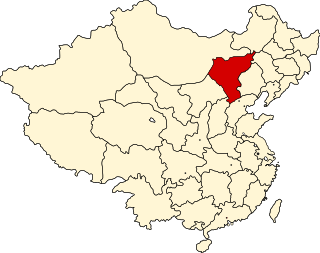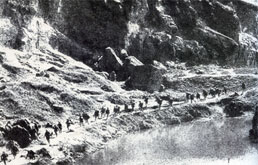Japan
Japanese Northern China Area Army – Lieutenant General Hayao Tada [1]
The Japanese North China Area Army was a field army of the Imperial Japanese Army during the Second Sino-Japanese War.
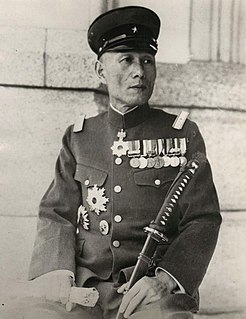
Hayao Tada was a general in the Imperial Japanese Army in the Second Sino-Japanese War.
- 15th Independent Mixed Brigade [ Hebei, Peiking area]
- 27th Division [ Hebei, Tientsin area]
- 7th Independent Mixed Brigade [ Shandong, Huimin area]
- 110th Division [Hebei, Baoding area]
- 8th Independent Mixed Brigade [Hebei, Shijiazhuang area] - Major General Mizuhara [2]
- 1st Independent Mixed Brigade [Hebei, Handan area]
- Mongolian Army [HQ: Chahar, Zhangjiakou]

Suiyuan was a historical province of China. Suiyuan's capital was Guisui. The abbreviation was 綏. The area Suiyuan covered is approximated today by the prefecture-level cities of Hohhot, Baotou, Wuhai, Ordos, Bayan Nur, and parts of Ulaan Chab, all today part of Inner Mongolia Autonomous Region. Suiyuan was named after a district in the capital established in the Qing Dynasty.

Datong is a prefecture-level city in northern Shanxi Province in the People's Republic of China. It is located in the Datong Basin at an elevation of 1,040 metres (3,410 ft) and borders Inner Mongolia to the north and west and Hebei to the east. It had a population of 3,318,057 during the 2010 census, of whom 1,629,035 lived in the built-up area made of the three urban districts of Chengqu, Kuangqu and Nanjiao.
- 1st Army [ Shanxi, Taiyuan]
- 36th Division [Shanxi, Lu'an area]
- 3rd Independent Mixed Brigade [Shanxi, Shanheng (山亨) county area]
- 4th Independent Mixed Brigade [Shanxi, Yangquan area] - Lieutenant General Katayama [2]
- 9th Independent Mixed Brigade [Shanxi, Taiyuan area]
- 41st Division [Shanxi, Linfen area]
The 36th Division was an infantry division of the Imperial Japanese Army. The division was formed in 1939 and was disbanded in 1945. Its call sign was the Snow Division. The 36th Division was activated at Hirosaki 7 February 1939, simultaneously with 32nd, 33rd, 34th, 35th and 37th divisions.
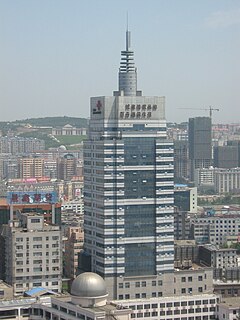
Yangquan is a prefecture-level city in the east of Shanxi province, People's Republic of China, bordering Hebei province to the east. Situated at the eastern edge of the Loess Plateau and the west side of the Taihang Mountains, Yangquan occupies a total area of 4,452 square kilometres (1,719 sq mi). According to the 2010 Census, Yangquan has a population of 1,368,502 inhabitants, 95,386 more than in 2000.
The 41st Division was an infantry division of the Imperial Japanese Army. Its call sign was the River Division

Hebei is a province of China in the North China region. The modern province was established in 1911 as Zhili Province or Chihli Province. Its one-character abbreviation is "冀" (Jì), named after Ji Province, a Han dynasty province (zhou) that included what is now southern Hebei. The name Hebei literally means "north of the river", referring to its location entirely to the north of the Yellow River.
The 27th Division was an infantry division in the Imperial Japanese Army. Its call-sign was the Field Division. It was formed in China as triangular division from the independent mixed brigade and other units 21 June 1938
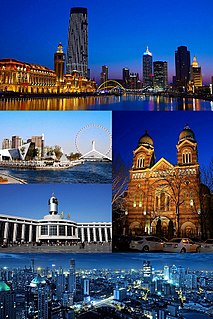
Tianjin, alternately romanized as Tientsin, is a coastal metropolis in northern China and one of the nine national central cities of the People's Republic of China (PRC), with a total population of 15,621,200 as of 2016 estimation. Its built-up area, made up of 12 central districts, was home to 12,491,300 inhabitants in 2016 and is also the world's 29th-largest agglomeration and 11th-most populous city proper.
Collaborationist Chinese forces
- ?
